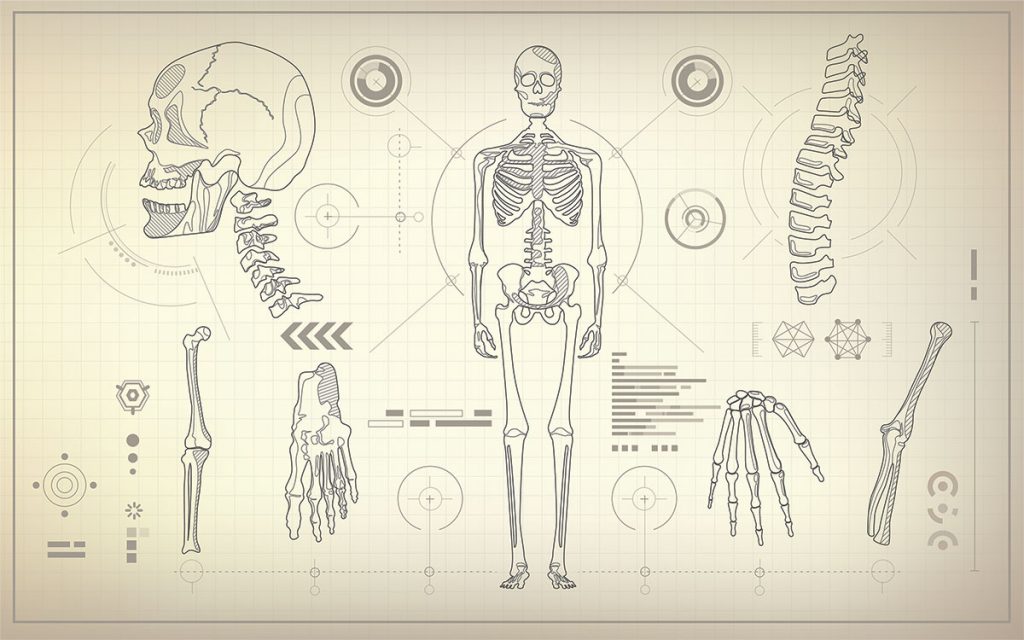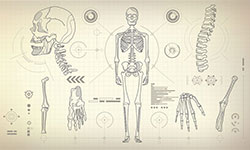
Treatment starts with identification of underlying causes of pain. It is important to understand how pain impacts the quality of life and ability to function at a reasonable level.
History and Examination:
A good description of the pain is critical to diagnosis of pain. How the pain started to how it behaves with different activities reveals the cause and suggests the treatments. For example, pain in low back that is worse in morning and gets better with activity is different from pain that is worse with standing/walking but improves quickly with sitting down. Pain radiating along specific paths along the extremities suggests impingement of the nerve as it exits the spinal column or at specific bottlenecks it travels through. Over 75% of the diagnosis is based on a good and thorough history.
Examination helps clarify and support the diagnosis. A good exam can help sort out among conditions that cause similar pain patterns but require very different treatment approaches. Pain radiating down the arm is a good example of this. The nerve can be compressed as it leaves the spine (radicular or nerve root compression) or along multiple narrow channels as it traverses through the neck musculature and between the collar bone and first rib.
Between a good history and examination, we can come a very precise diagnosis and rule out serious issues like infections, fractures, cancer etc (red flags on history suggest further evaluations for these conditions that need urgent treatment).
Imaging:
Simple xrays are useful in acute pain situations. They may also indicate chronic changes such as arthritis in joints of spine and periphery, instability, suggest possibility of tumors, infections, fractures etc.
CT Scan and MRI are more advanced imaging studies revealing a lot more detail of joints and soft tissue such as discs, muscles, tendons etc. CT scan is in general better for evaluating bone and MRI gives a much better image of the soft tissue.
It is tempting to look for diagnosis in the detailed and pretty images that we can obtain. Unfortunately, we can see very similar imaging findings with minimal or no pain. The role of imaging is more to rule out serious conditions and to use as roadmap for procedures.
Almost everybody over the age of 30 have findings on the MRI. A common finding is degenerative disc disease and lumbar spondylosis. There is very little correlation between what the MRI shows on imaging and the clinical cause of pain that needs to be treated. Whereas with whiplash type injuries causing neck pain/headaches, MRI is commonly normal
Other testing:
EMG/NCV : study of how nerves are working can provide clues to the underlying causative factors
Blood tests: As needed to evaluate basic functioning of kidneys, liver, blood coutns etc. Diagnose inflammatory and other painful conditions. Usually these are done in consultation with
TREATMENT OF PAIN:
A proper diagnosis goes a long way in the proper treatment of pain.
Non-invasive or conservative approach:
Physical therapy: Bones by themselves, no matter how strong they appear to be, are insufficient to sustain the mechanical forces generated by daily activity. Jumping off a height of about 4 feet can damage the bones of the knee joint without the shock absorbing muscles. Similarly, the spinal column, without the surrounding muscles cannot tolerate stresses more than 80-100 lbs.
A good physical therapist can evaluate the various muscles to look for weaknesses and imbalances leading to pain. Flexibility of the muscles, ligaments/tendons and joint capsules are as important as strength of the muscles. Tight hamstrings are a common cause of low back pain. Physical therapy takes a long time to help the muscles recondition and correct the imbalances.
Medications:
Anti-inflammatory medications; For musculoskeletal pain a combination of Tylenol and NSAIDS (ibuprofen like medications) seem to help more than any other medications. Of course, care must be taken to avoid side effects of such medications over the long term. A short course, or occasional use is reasonably safe. Please discuss these medications with your physician before taking them for more than a few days.
Muscle relaxants: Short periods of muscle relaxants can help but there is no evidence that long term use of muscle relaxants can help chronic pain. They can cause sleepiness and balance issues, especially as we get older.
Antidepressants: A number of antidepressants help pain moderately. The pain relief seems to be above and beyond helping depression that is commonly seen with chronic pain. Again, these medications have to be taken under close supervision of a physician
Nerve membrane stabilizers: Lyrica (pregabalin) and Neurontin (gabapentin) are commonly used. These again help moderately and seem to work better on nerve type pain and functional pain syndromes. These are again by prescription only taken under close supervision of a physician.
Anti-seizure medications: Used is specific pain syndromes such as trigeminal neuralgia etc.
Steroids: Medications have strong anti-inflammatory properties but also have significant effects on the body if taken over the long term.
VIRTUAL REALITY and BIOFEEDBACK systems: New research and technology has made these powerful tools available to be used at home and in the clinics.
PROCEDURES:
These are usually done using imaging to guide the medication to the correct target. The imaging most used is a portable x-ray machine called fluoroscopy. Ultrasound is also used when feasible. Rarely CT scan can be used for such guidance.
The procedures are mostly used for diagnostic purposes. Response to targeted medication placement (mostly local anesthetics or numbing medications, and/or steroids) helps clarify the underlying cause of pain. When properly performed the pain relief can last long durations helping patients recover their strength and resolve imbalances.
More advanced procedures such as radio frequency ablation, spinal cord stimulation, peripheral nerve stimulations, implantable pain pumps and many others can be of more long-term help.
The most important step is identifying the appropriate treatment or procedure for the underlying condition to produce long term results.
PROCEDURES:
HEAD & NECK
- Greater occipital nerve blocks
- Spinal accessory nerve block
- Peripheral nerve blocks
- Cervical medial branch block
- Cervical selective nerve root block
- Trigeminal nerve/sphenopalatine ganglion blocks
- Stellate ganglion block
- Cervical facet joint block
- Cervical epidural
- Glossopharyngeal nerve block
THORACIC
- Epidural
- Shoulder joint inj
- Paravertebral block
- Kyphoplasty
- Intercostal nerve block and catheter for painful rib fractures
- Intrapleural catheter
ABDOMINAL
- Celiac plexus block
- Lumbar sympathetic block
- Superior hypogastric plexus block
LUMBAR
- Lumbar epidural
- Lumbar facet joint injections
- Lumbar medial branch blocks
- Caudal epidural steroid injections
- Lumbar medial branch rhizotomy
- Lumbar transforaminal epidural steroid injections
- Kyphoplasty
PELVIC
- Sacro-iliac joint inj
- Ganglion impar block
- Sacral selective nerve root block
- Bursal injection
- Pudendal nerve block
- Hip joint injection
- Piriformis injections/sciatic nerve injection
EXTREMITIES
- Tennis/golfer’s elbow
- Peripheral nerve injections and stimulation
- Pain in shoulder, arms, thighs,
- Chronic knee pain (after replacement)
- Chronic foot pain (after injury/surgery)
- Carpal tunnel
- Morton’s neuroma
- Joint injection
RADIO-FREQUENCY NERVE ABLATIONS
- Neck and low back arthritis
- Other joints such as knee and hip arthritis
- Sacroiliac joint arthritis
ADVANCED INTERVENTIONS
- Implanted spinal cord pump
- Intrathecal catheter
- Implanted spinal cord stimulator
- Sacro-iliac joint fusion, minimally invasive
- Minimally Invasive Endoscopic Decompression for lumbar spinal stenosis
- Vertiflex implant for spinal stenosis


